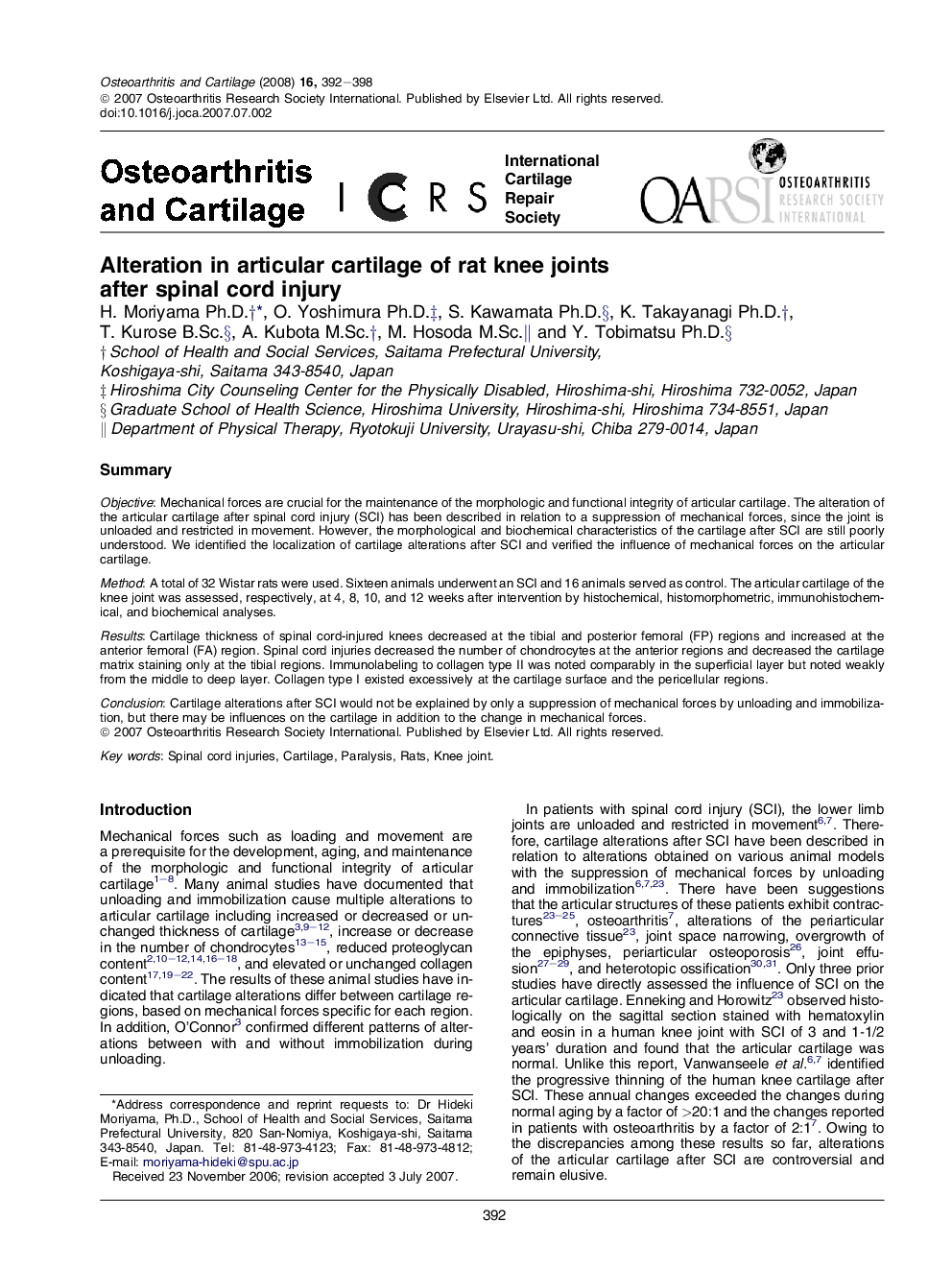| Article ID | Journal | Published Year | Pages | File Type |
|---|---|---|---|---|
| 3381157 | Osteoarthritis and Cartilage | 2008 | 7 Pages |
SummaryObjectiveMechanical forces are crucial for the maintenance of the morphologic and functional integrity of articular cartilage. The alteration of the articular cartilage after spinal cord injury (SCI) has been described in relation to a suppression of mechanical forces, since the joint is unloaded and restricted in movement. However, the morphological and biochemical characteristics of the cartilage after SCI are still poorly understood. We identified the localization of cartilage alterations after SCI and verified the influence of mechanical forces on the articular cartilage.MethodA total of 32 Wistar rats were used. Sixteen animals underwent an SCI and 16 animals served as control. The articular cartilage of the knee joint was assessed, respectively, at 4, 8, 10, and 12 weeks after intervention by histochemical, histomorphometric, immunohistochemical, and biochemical analyses.ResultsCartilage thickness of spinal cord-injured knees decreased at the tibial and posterior femoral (FP) regions and increased at the anterior femoral (FA) region. Spinal cord injuries decreased the number of chondrocytes at the anterior regions and decreased the cartilage matrix staining only at the tibial regions. Immunolabeling to collagen type II was noted comparably in the superficial layer but noted weakly from the middle to deep layer. Collagen type I existed excessively at the cartilage surface and the pericellular regions.ConclusionCartilage alterations after SCI would not be explained by only a suppression of mechanical forces by unloading and immobilization, but there may be influences on the cartilage in addition to the change in mechanical forces.
